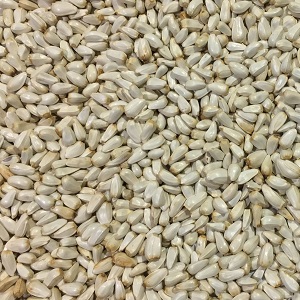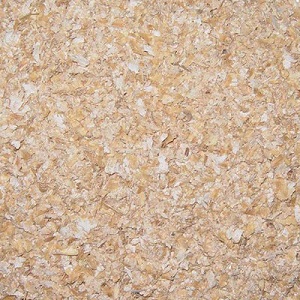Description
Safflower seeds are achenes (fruits) surrounded by a thick fibrous hull. They are smooth, shiny and angular, about 6-9 mm long, white or brownish and white with grey, brown or black stripes. They generally contain 33-60% hull and 40-67% kernel. Thin-hulled varieties have been developed (Baümler et al., 2006; Mündel et al., 2004; Ecoport, 2010; Oyen et al., 2007).
Whole safflower seeds are mainly used for pet food, either as birdseeds for wild birds, racing pigeons, parrots and other pet birds, or for pet mammals such as gerbils, hamsters and chinchillas. Safflower seeds are normally too expensive to be used as a feed ingredient for farm animals (Oelke et al., 1992; Mündel et al., 2004).
Safflower seeds are less palatable than other common oilseeds. Whole safflower seeds can be fed to beef cattle without processing. Due to their fibre content, higher levels of safflower seeds in the diet can result in lower animal performance. The maximum inclusion rate for safflower seeds is 1.1 kg/cow/d (Walker, 2006).
Due to their very high fibre content, safflower seeds are of low value to poultry (Kohler et al., 1965).
In broilers, full fat safflower seeds have been tested at levels up to 20% in diets where energy and protein were adjusted. Seeds have the advantage of providing more energy than safflower meal. In this study growth performance and carcass traits were not affected; only blood cholesterol was significantly decreased (Malakian et al., 2011).
When up to 10% safflower seeds were tested in layer diets, there was a trend for slightly decreased performance although this effect was not significant (Hosseini-Vashan et al., 2008a). In similar trial, inclusion of safflower seeds in the diet induced changes in the fatty acid composition of yolks, in particular an increase in linoleic acid (Hosseini-Vashan et al., 2008b).
Safflower seeds are often used as birdseed especially for members of the parrot family and pigeons. They are a common alternative to sunflower seeds. The bird feed industry prefers to use white hull and normal hull types of safflower seeds rather than striped types (Emongor, 2010).





Reviews
There are no reviews yet.